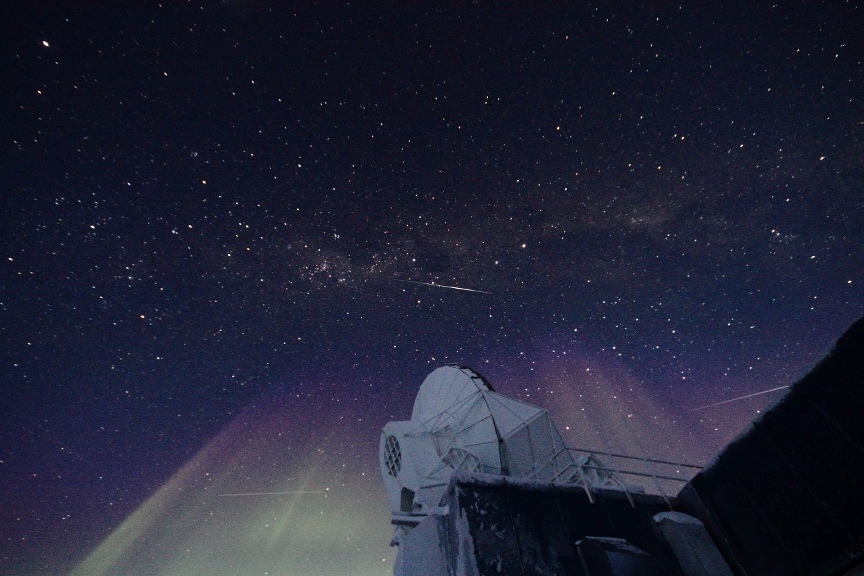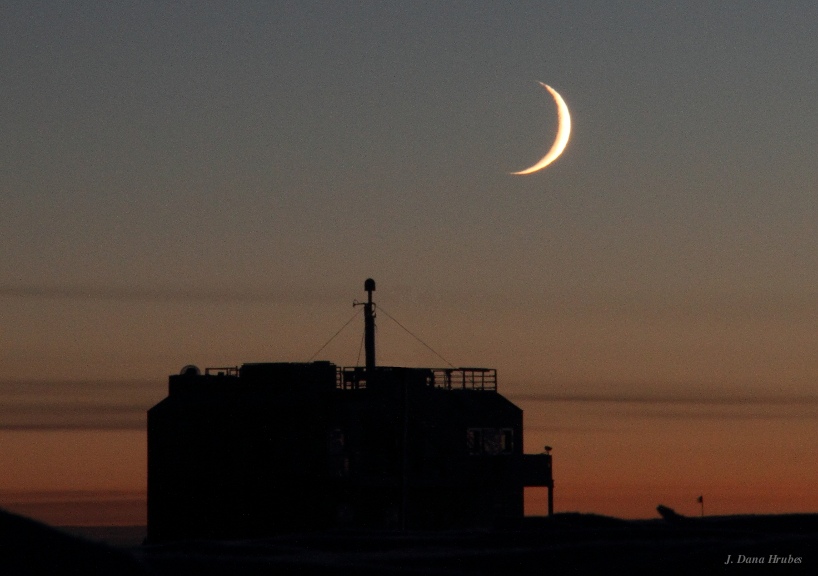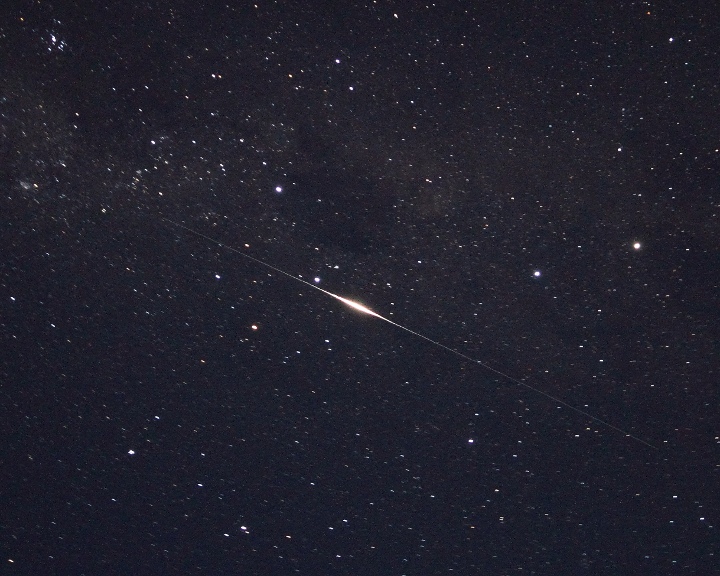April, 2010....J.
Dana Hrubes...updated April 30, 2010 , 0053 GMT
(CLICK ON UNDERLINED
LINKS FOR
PHOTOS....CLICK
"BACK" ON YOUR BROWSER TO RETURN TO THIS PAGE)


South Pole Telescope back-lit by an aurora and three satellite traces in this 30 second exposure
April is the month when we first start
seeing the skies filled with stars, auroras and traces produced by the
sunlight reflecting off of polar orbiting satellites down to the polar
plateau. The skies appear to be crowded with satellites because all
polar orbiting satellites cross at the poles. aurora and SPT aurora and SPT (2) aurora and SPT (3) aurora and SPT (4) (telescope is blurred because it is scanning the skies) SPT twilight aurora
Early in the month there was a bit of twilight left. dark sector twilight SPT twilight station twilight SPT backlit by the setting moon setting moon over ARO
It has been a record breaking month for low temperatures. We dropped
below -100 o F (-73.2 o C) the second earliest date in the season on
record. It was an early 300 club this
year! In addition, this was the
coldest April on record. The monthly average temperature was -80.7 o
F/-62.6 o
C, breaking the previous record set in 1998. This month
was 9.4 o F/5.2
o C below
normal.

The Atmospheric Research Observatory and the setting moon at the beginning of April
Iridium satellites of particular orbital planes were flaring several
periods this month. When the 11 iridium satellites of one of the 6
orbital planes are in the correct position, the flat antennas reflect
sunlight down to the earth creating extremely bright "flares" of
magnitude up to -8, the brightest thing in the sky after the moon.
Since we are right at the geographic South Pole, where all 66 iridiumm
satellites cross, we get iridium flares every 9 minutes and ten seconds
for 4-5 days at a time.
iridum satellite flare over the Dark Sector Laboratory
 A magnitude -7 iridium satellite flare through the Southern Cross and near Alpha and Beta Centauri
A magnitude -7 iridium satellite flare through the Southern Cross and near Alpha and Beta Centauri
I stopped by the balloon inflation
facility a week ago and watched the launch of a NOAA ballon,
piggy-backed with a meteorological data package. NOAA measures
atmospheric parameters and gas concentrations including
ozone. balloon launch at -80 F
How do I monitor the telescope when I am in my room during sleeping
hours? I have three networked computers in my room and I can monitor
and control the telescope from there. I usually wake up about
once an hour or less and look over at the computer screens to check
things. If I see a problem, I can frequently fix issues like computer
or daemon crashes that occur with the many networked computers on the
telescope, but sometimes I have to get dressed and walk the mile out to
the dark sector to fix things if it is a more serious computer issue or
some other type of problem. computers in my room
Next Month - May: More Darkness -
Auroras - Stars!
Recent
South Pole Telescope Technical Papers
A Real-Time Photo of South Pole Station as Seen
from the ARO
Building (live when satellite is up)
A
Comprehensive
South Pole Web Site by Bill Spindler
Winterover
Web
Pages
(Bill Spindler's List)
BACK
TO MY SOUTH POLE 2010 PAGE
BACK TO MY BI-POLAR HOME PAGE

